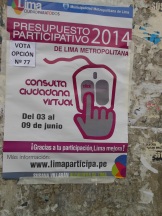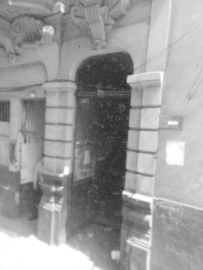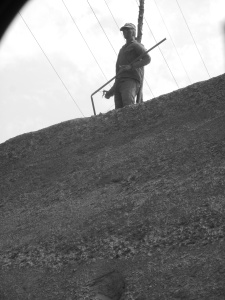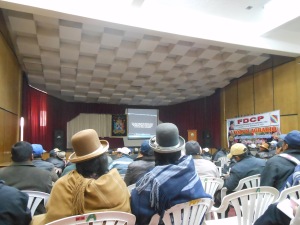For the most part I found Sam Youngman’s Politico piece on getting out of Washington to be regrettable. As I wrote here, it’s full of bad advice for journalists, and misleading on the real source of DC’s occasional journalistic pathologies.
But there’s an additional vein, buried beneath the populist posturing, that’s interesting: an affection for an America that lies well beyond the corridors of power, that is richly bound up with the resonance of a specific place and the pull and mystique of the local. Youngman tends to bundle multiple ideas together in a way that’s not always clear, and this is no exception: his plea to get out of DC contains an impressionistic, even spiritual, component (getting out of Washington as salvation), as well as an epistemological component (we can’t really understand American politics if all we understand is the capital). Both have at least a grain of truth, and I will try to unpack them both here in turn.
Chasing place
I have always thrilled to the power of place. My childhood memories of small-town piedmont North Carolina are replete with great green and golden fields of corn and soybeans, hemmed round with forests of oak and pine that I hiked through every autumn, rambling with my family’s dogs through searing summers. Later, when my family relocated to the western NC mountains, I fell hard for the austere beauty of the Appalachians in winter, the driving winds and soothing snow that blanketed our little valley. These communities could seem small, cramped at times. But they were possessed, like every other place, with their own character, a particular terroir that made them what they are.
I split my time now between NC and DC (and parts further out), and I certainly find that any time I spend in North Carolina resets my perspective. The town does not thrum with the tension of taut ambition and constant striving. The sky is framed, anywhere I turn, by stone and stark bare branches. After I was out of the country over the summer, I returned to my hometown to find a new brewery, bearded young locals busily making an excellent porter, as black as crude oil and nearly as dense. A woman I went to high school with stopped by my parents’ house with fresh bagels. Out walking after a snowfall, I tracked deer through two inches of snow, big rounded-off buck hooves pressed clean through to the red earth below.
It is impossible to think, faced with this reality, that the world of our nation’s capital is the only world that is. While “merely” impressionistic, it seems to be nonetheless indispensable. To lose our sense of place, of where we are from, of the ground on which we stand, is to lose a big chunk of what makes us able to write.
But then again, Washington is, of course, as real a place as Western North Carolina, with locals who have built their lives here, and (of course!) local institutions (of the political and culinary variety). To deny this is to indict our own terroir; we pull the ground from underneath ourselves.
How (not) to talk about local politics
Youngman’s essay is not terribly concerned with proving the assertion that political journalists should get out of DC to cover “regular people” in real places (as though, to repeat myself from above, Washington were not a real place). But in asserting the importance of local politics, he’s not wrong. Just ask Ibn Khaldun, whose entire ontology of historical change is built on the idea that actors from the periphery periodically arise to take over (or destroy!) political centers. Or look at the Tea Party wave – a phenomenon that arose more or less from the provinces, and has certainly invaded the political center in some strength at the time of writing.
Beyond the ever-present possibility that peripheral actors will arise from their localities to exert their power at the center, the lived reality of local politics is vitally important. At the risk of sounding trite: it is in local elections, the administration of schools and other public facilities, discussions of county property and zoning, oversight of municipal bodies and law enforcement that local politics is lived and experienced firsthand by most people. These are just as real as national politics playing out in Washington DC (a place that is itself real, and has its own local politics to boot). And these are vital – for example, if the highhandedness of the recently elected Republican majority at work in my home county is not a story worth telling, and one of high importance for the insights it provides into small town political life in the current era, than its hard to imagine what would be. Unfortunately, it’s in talking about these stories that Youngman goes off the rails a little.
This is a big part of the substance of Youngman’s critique, and he uses his experience in Kentucky as an example of local truths demolishing “conventional wisdom.”
At least once a week, I hear conventional wisdom from D.C. or New York upended by words directly from the mouths of a Kentucky voter. Democratic Senate candidate Alison Lundergan Grimes’s campaign is described as strong nationally, but it looks like a hot mess up close. Sen. Rand Paul (R-Ky.), often mocked by cable news, is cheered and encouraged to run for president at small restaurants in impoverished mountain towns throughout Eastern Kentucky.
I am sorry to report that these are not useful or surprising ground truths. It should be no surprise to anyone that Sen. Paul is cheered by the conservative core voters in his home state. And perhaps I’ve been reading different pieces than Youngman (or don’t have access to his sources), but national pieces seem more than aware of Grimes’ weaknesses as a candidate. Indeed, this leads into a point already made plenty ably by Chris Cilizza: plenty of national outlets have resident experts at covering state politics (and world politics, too, for that matter). Perhaps there should be more coverage, because there’s certainly a lot of news. But it’s hard to argue that national media outlets don’t understand the crucial importance of local politics. Reporters ought to be expected to bring a little more nuance back to the capital when they trek out to the states – and Youngman, writing in from one, certainly should have done better.
All real places
All in all, this piece should be a reminder that, while apprehending local realities is vitally important, there are right and wrong points to take away from these encounters. And more importantly, perhaps, the attitude with which we approach other places – rural places, foreign places, the strange hybrid city positioned in the District of Columbia – should be one of openness, and not of dismissal of any given scene, any given town.
I promised myself that I’d end this piece on an upbeat note, and so it strikes me that this is not a bad lesson to take away: the importance of a relentless attention to local dynamics, terroir and place and power and the unflagging search for story, without fetishizing small towns or Middle America, nor privileging the viewpoint of the capital or the center. And more upbeat still: it is almost Christmas Eve. We are all in real places.









